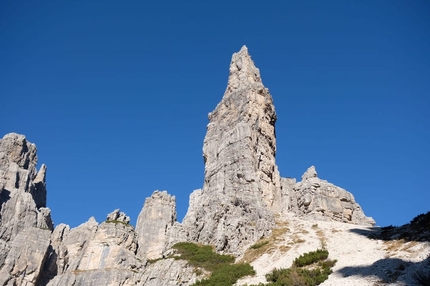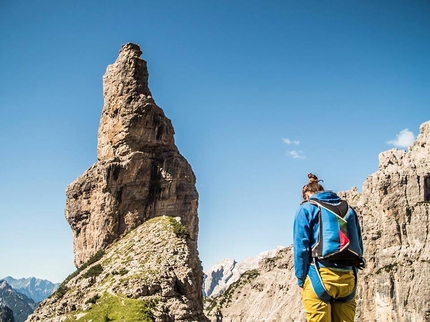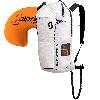New climb on iconic Campanile di Val Montanaia (Dolomites) by Fabio De Cesero, Luca Vallata
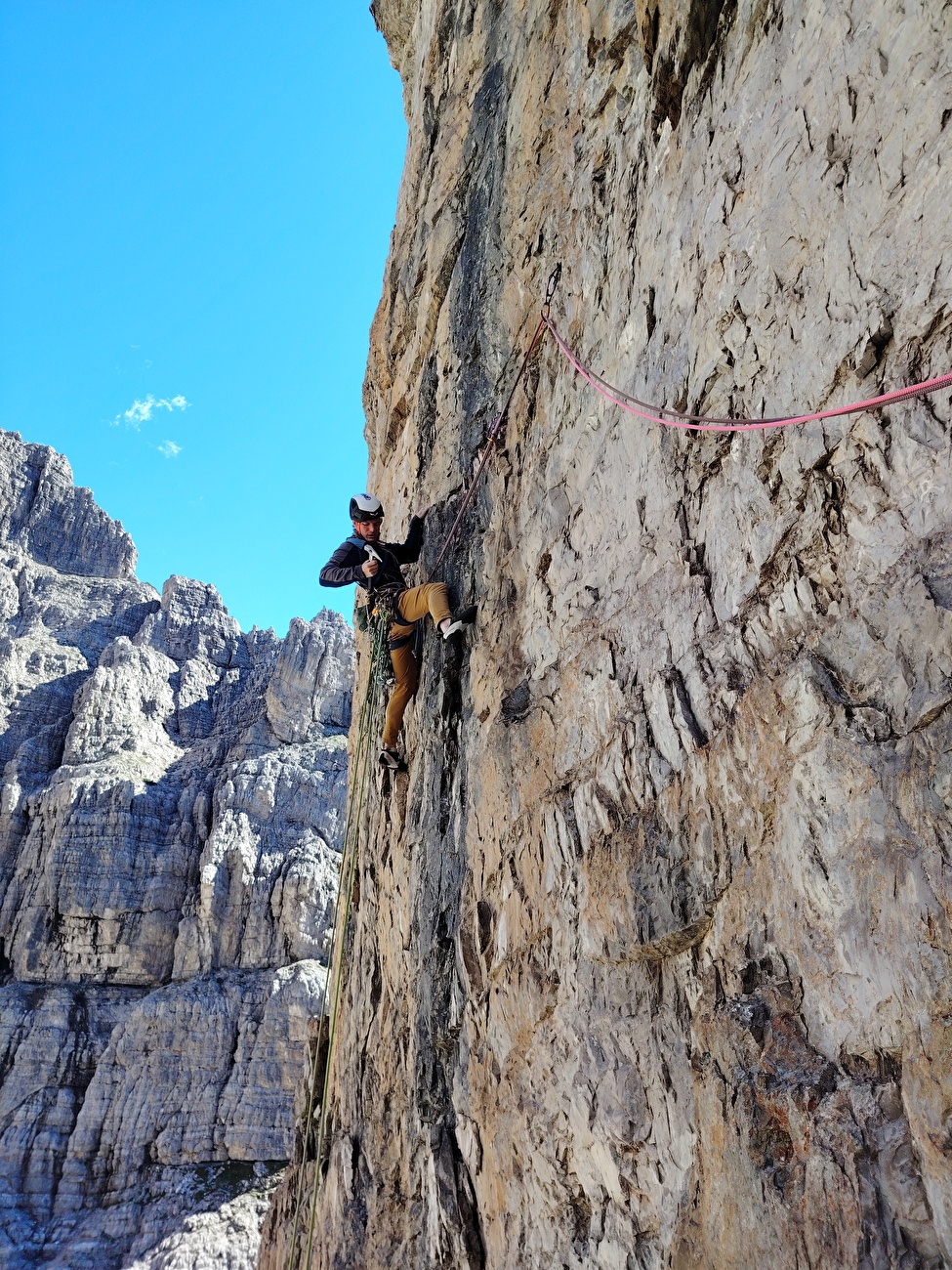
 1 / 9
1 / 9 Luca Vallata
Luca Vallata
The Strapiombi Nord, the North Overhangs of Campanile di Val Montanaia, have played an enormous role in the history of rock climbing in the Dolomites; a role that appears completely disproportionate when one considers its modest stature and compares it to the mammoth size of other giants in the Pale Mountains.
The mere forty meters separating the North Terrace from the Balcony are laughable when set against, for example, the more than a thousand meters of the Solleder-Lettenbauer on the Northwest Face of Civetta; however, starting in the 1920s, they were the stage for a hotly debated mountaineering controversy, which involved practically all the most important figures in the Italian climbing scene (Piaz, Tissi, Cassin, Carlesso, Comici, Soravito, Mazzorana, to name a few), and which, in the minds of many climbers, still endures today.
The Vicenza-born climber Severino Casara claimed to have soloed, without shoes, without a rope, without witnesses, and on a rather foggy day (3 September 1925), the first route through the North Overhangs. The route had already been attempted by a party led by the Fanton brothers, and their pegs had remained on the wall, marking their highpoint. These were at the start of a horizontal crack that shot out (and still shoots out) to the right, towards the void of the Northwest Arête (known as Spigolo a Denti di Sega, Sawtooth Arête due to its characteristic profile).
The events that followed are collected and narrated better than ever before in the beautiful book "La verità obliqua di Severino Casara" by Italo Zandonella Callegher and Alessandro Gogna, and there is no point recount them here with any pretense of completeness. Suffice to say that since then, climbers have always been split between those who believe Casara's version, and those who see the whole story as a great fabrication.
The debate was important because, had the route actually been climbed, it would have represented a further step forward, in terms of difficulty, compared to the famous Solleder-Lettenbauer on Civetta. Traditionally considered the first grade VI route in the Dolomites this was, incidentally, established that same year, in 1925.
After the great uproar caused by the Sawtooth Arête, only one more independent route was added to North Overhangs: this was the work, in 1959, of Plinio Toso, known as Orso (from Murano) and Giuseppe Faggian, known as Bepi (from Pordenone). Their climb tackles the face centrally, aiming for an obvious yellowish corner.
I have traversed the North Overhangs dozens of times, four or five times upwards and all the other times on descent, in most cases accompanying my guests on the Normal Route: the common descent for all routes goes down the north side via the famous Calata Piaz abseil (on the Campanile almost everything has a name: pulpits, cracks, chimneys, ridges, descents, ledges...).
For a few years, my gaze kept falling on that empty section of wall to the left of the Toso-Faggian, crossed by a large, dark streak. To climb this line, Fabio De Cesero and I chose two clear days, the right partner, the right climbing shoes, all the necessary equipment, and we also took many photos...
The first two pitches of the route, which lead to the North Terrace, had been climbed before, many years ago judging by the pitons. The third pitch, which climbs the North Overhangs, was opened by Fabio on the 4th of September in six hours, with some sections of aid climbing and an obligatory free section at around VII+.
On the 18th of September, we reached the Balcony via the Tissi route and opened the remaining three pitches that led us to the summit. On the same day, after improving some unreliable pitons on the third pitch, we freed it, encountering difficulties estimated at VIII+.
It's a short route, but we believe it is significant for all the aforementioned reasons. It is called La Poderosa and is dedicated to all the good people in Gaza and the West Bank who are humiliated, starved, and killed every day.
- Luca Vallata, Erto



 Copia link
Copia link


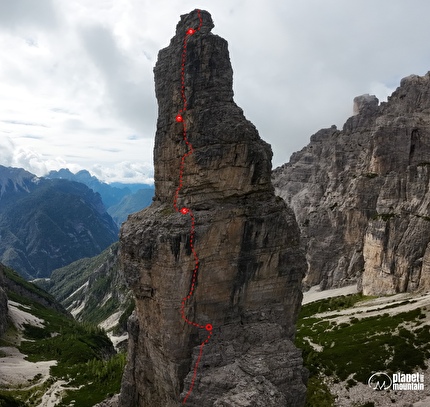
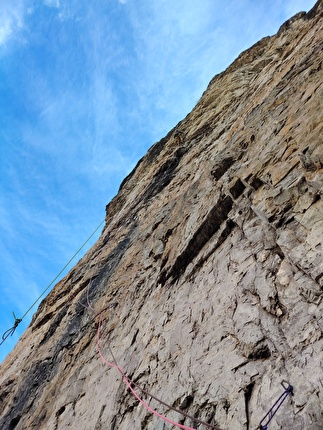
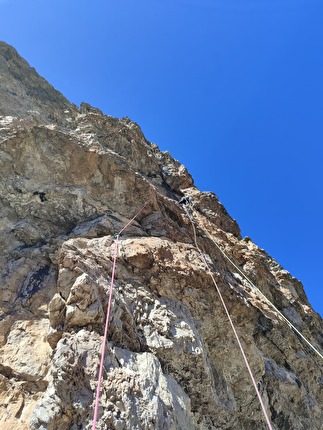
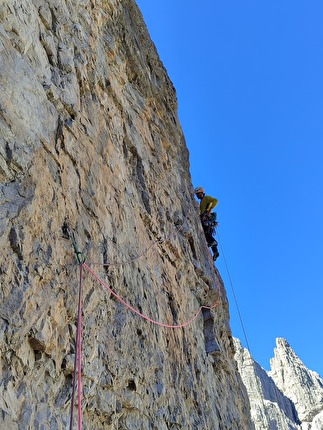
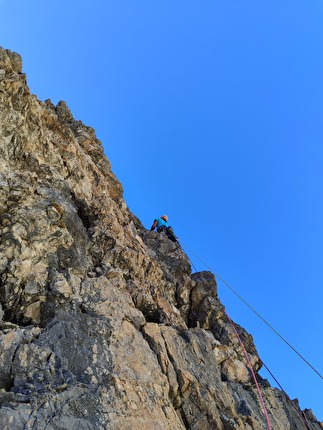
 See all photos
See all photos